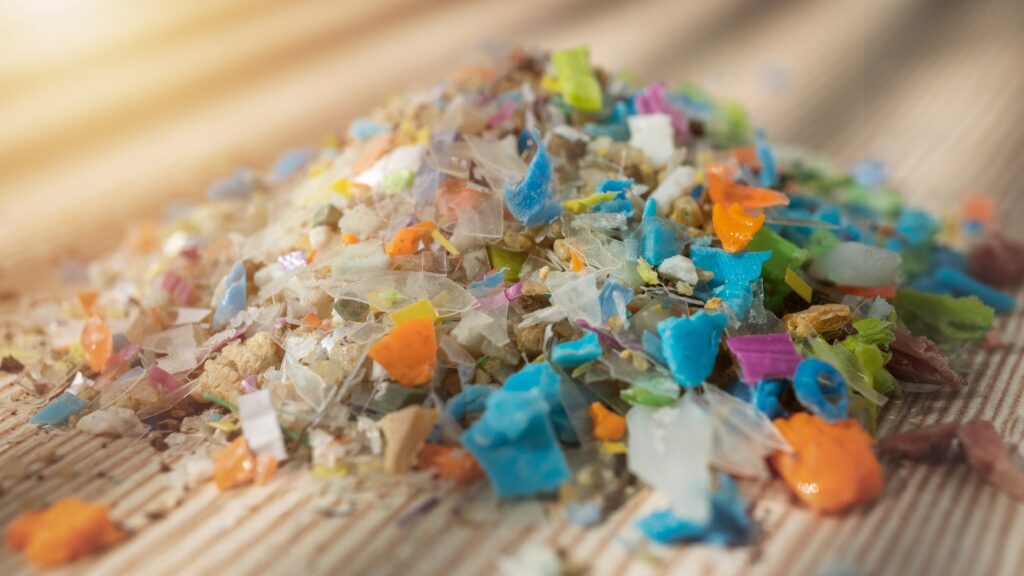A new study suggests that boiling tap water might be a simple way to cut down on the amount of microplastics we consume. Microplastics are tiny plastic particles that come from food, water, and air. These particles have been found deep inside human organs and tissues, raising concerns about their potential harm to health.
How Boiling Water Reduces Microplastics
Researchers in China tested the effect of boiling water on microplastics. They added tiny plastic particles, known as nanoplastics and microplastics, to tap water with varying mineral content. After boiling the water for five minutes, they found a significant reduction in the amount of microplastics.
The reduction was most notable in hard water. In water with a higher mineral content, the microplastic levels dropped by up to 90%. In soft water, the reduction was about 25%.
The key to this reduction lies in calcium carbonate. This mineral is abundant in hard water. When water is boiled, calcium carbonate forms limescale, the crusty buildup found in kettles. This limescale traps the microplastic particles, naturally filtering them out of the water.
Why Limescale Helps
Limescale, which is typically seen as a nuisance in kettles and pipes, plays a vital role in reducing microplastics. As the calcium carbonate forms limescale during boiling, it catches the plastic particles, preventing them from staying in the water. This process helps clean the water without the need for chemicals or special filters.
To make this process more effective, the researchers recommend using non-plastic kettles. They also suggest using stainless steel filters. These filters can help retain the limescale that traps microplastics, ensuring that the boiling process works as efficiently as possible.
The Tradition of Boiling Water
Boiling water is not a new practice. It has been a common tradition in many countries for centuries. People have boiled water to make it safe to drink by killing harmful bacteria and pathogens. In countries like China, Vietnam, and Indonesia, boiling water has been a long-standing practice.
Now, scientists have found another benefit to boiling water—reducing exposure to microplastics. This simple, ancient practice may help protect people from consuming harmful plastic particles.
Zimin Yu, a biomedical engineer and co-author of the study, said, “Drinking boiled water appears to be a viable long-term strategy for reducing global exposure to microplastics.” He noted that the results may vary based on the hardness and quality of local water.
Microplastics and Health Risks
Microplastics are tiny particles of plastic that come from the breakdown of larger plastic items. These particles are so small that they can be found in food, water, and even the air. Research has shown that microplastics can enter the human body through drinking water, food, and breathing.
Studies have already linked microplastics to various health risks. For example, scientists have found microplastics in human arteries, which could increase the risk of stroke or heart attacks. Other studies have detected higher levels of microplastics in the brains of people with dementia. However, these studies are still observational, so it is unclear whether microplastics directly cause these health issues.
While the research is still ongoing, there is growing concern about the long-term effects of microplastics on human health. Reducing exposure to these particles is important, and boiling water could be one way to lower the risks.
A Simple Way to Reduce Exposure
Boiling water may not eliminate all microplastics, but it is a simple and easy way to reduce their presence. By boiling tap water, especially in areas with hard water, people can lower their exposure to harmful plastic particles. This method is cost-effective and accessible to most people, making it an easy solution for reducing microplastic intake.
The researchers who conducted the study believe that boiling water could be a practical step toward safer drinking water. They hope their findings will inspire more research to explore the full benefits of boiling water in reducing microplastic exposure.
What’s Next for Microplastic Research?
While boiling water is a promising solution, more research is needed to fully understand its effects. Scientists are also exploring other ways to remove microplastics from water and food. New technologies and filtration systems are being developed to clean water more effectively and remove harmful plastic particles.
In the meantime, boiling water is a simple and practical solution for anyone concerned about microplastics. As scientists continue to study the effects of microplastics on human health, methods like boiling water may become even more important in protecting people from potential harm.


